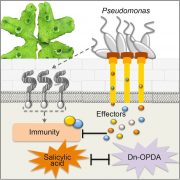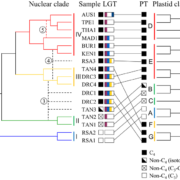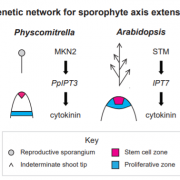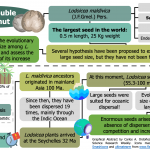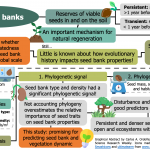Cones structure and seed traits of four species of large‐seeded pines: Adaptation to animal‐mediated dispersal (Ecol. Evol.)
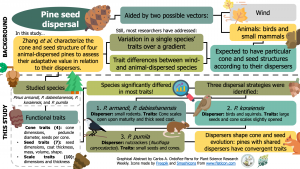 Different studies show that animal-dispersed pines have particular cone and seed structures to match their dispersers. However, most research has either addressed the changes in cone and seed traits in a single species over an environmental gradient or the differences between wind-dispersed and animal-dispersed pines. In this study, Zhang et al. characterize the cone and seed structure of four animal-dispersed pine species –Pinus armandi, P. dabieshanensis, P. koraiensis, and P. pumila– to assess the adaptive value of this morphology in relation to their disperses. The four species exhibited significant differences in mostly all features. Still, cone and seed traits allowed to separate the species into three dispersal strategies that coincide with their dispersers: (i) P. armandi and P. dabieshanensis, dispersed by small rodents, had cones with scales that open upon maturity and thick seed coats; (ii) P. koraiensis, dispersed by birds and squirrels, had large seeds and slightly open cones; and (iii) P. pumila, which had the smallest cones and seeds, is dispersed by nutcrackers (Nucifraga caryocatactes). Given this result, the authors emphasize the role of dispersers in shaping cone and seed evolution in pines, suggesting dispersers can allow different species to converge in similar cone and seed traits. (Summary by Carlos A. Ordóñez-Parra @caordonezparra) Ecol. Evol. 10.1002/ece3.6273.
Different studies show that animal-dispersed pines have particular cone and seed structures to match their dispersers. However, most research has either addressed the changes in cone and seed traits in a single species over an environmental gradient or the differences between wind-dispersed and animal-dispersed pines. In this study, Zhang et al. characterize the cone and seed structure of four animal-dispersed pine species –Pinus armandi, P. dabieshanensis, P. koraiensis, and P. pumila– to assess the adaptive value of this morphology in relation to their disperses. The four species exhibited significant differences in mostly all features. Still, cone and seed traits allowed to separate the species into three dispersal strategies that coincide with their dispersers: (i) P. armandi and P. dabieshanensis, dispersed by small rodents, had cones with scales that open upon maturity and thick seed coats; (ii) P. koraiensis, dispersed by birds and squirrels, had large seeds and slightly open cones; and (iii) P. pumila, which had the smallest cones and seeds, is dispersed by nutcrackers (Nucifraga caryocatactes). Given this result, the authors emphasize the role of dispersers in shaping cone and seed evolution in pines, suggesting dispersers can allow different species to converge in similar cone and seed traits. (Summary by Carlos A. Ordóñez-Parra @caordonezparra) Ecol. Evol. 10.1002/ece3.6273.


